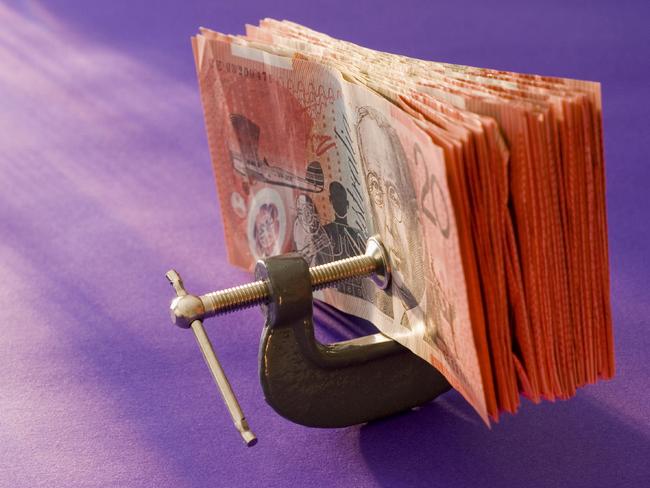Why banks are tightening the screws on term deposit rules
AUSTRALIAN banks have changed some of their rules that will affect smaller customers who are trying to save money as the cost of living rises.
Saver HQ
Don't miss out on the headlines from Saver HQ. Followed categories will be added to My News.
SAVERS who have been stung by sinking term deposit interest rates in the past 10 years are now facing increases in the minimums that they are permitted to invest.
Banks and other financial institutions have been tightening their rules around how much cash people must have in a term deposit, according to a new analysis for moneysaverHQ by research group Canstar.
It examined 70 institutions and found that the number requiring a $5000 minimum deposit had jumped 44 per cent in the past three years to 23, while the number requiring a minimum $2000 had doubled from three to six.
“People are having their alternatives narrowed,” said Canstar’s group executive financial services, Steve Mickenbecker.
MORTGAGES: Banks’ sneaky home loan rate rises
He said some savers only had small amounts to invest, but there were options. There are still 13 institutions with term deposit minimums of $0-$500, and 27 with $1000 minimums, but their numbers are dwindling.

Some product minimums are way above $5000. The Commonwealth Bank’s popular 2.7 per cent rate for a 24-month deposit is for amounts starting at $50,000.
Beyond Bank Australia recently increased its minimum term deposit amount to $2000. Its general manager customer experience, Nick May, said it was still one of the lowest barriers in the market.
“There is very little demand for low-balance term deposits,” Mr May said.
“The main reason for this is that those who have a small amount to invest are typically in the accumulation stage of their life, where they are gaining wealth. They are typically best suited to a savings account that allows them to add to their savings, which often includes a bonus rate of interest.”
INTEREST RATES: Just how fast does your credit card debt double?
New Reserve Bank of Australia data shows that one-year term deposits typically pay 2.2 per cent today, down from almost 8 per cent a decade ago. Three-year term deposit rates have dropped from 7 per cent to 2.45 per cent over the same period.
Mr Mickenbecker said alternatives to term deposits included online savings accounts with introductory interest rates above 3 per cent, but they could drop below 2 per cent once the four-month introductory period ended.
“Unless you are prepared to keep moving money around every four months to change interest rates, it’s not worth the hassle,” he said.
Bonus saver accounts offered interest rates near 3 per cent for people who deposit a minimum amount — such as $200 — each month, Mr Mickenbecker said.
“Some are clunkier than others to open up, but don’t stick your savings with your existing provider if they are only offering 2 per cent when you can get 3 per cent.
“If your existing provider isn’t offering you 2.75 per cent on a savings account, it’s time to really look at alternatives because that’s the rate available at 20-30 institutions.”


